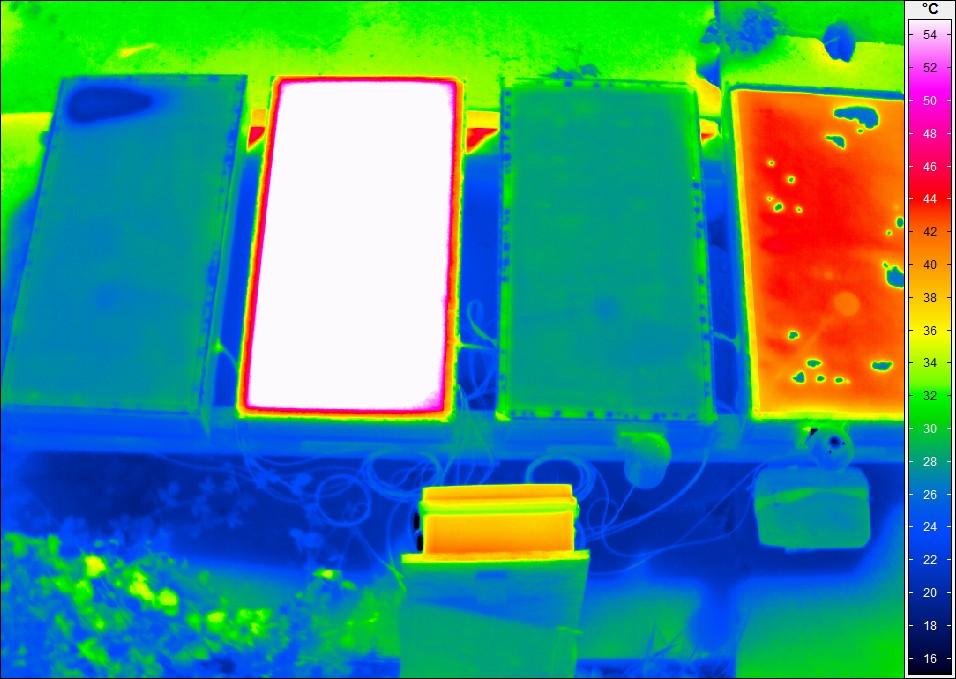

The Building Physics Research Team at CTU UCEEB is conducting comparative tests for Smart Save Energy to verify the properties
of reflective coatings designed for application on flat roofs. The reason for its use is to reduce the thermal load that solar
radiation places on the building structure and, subsequently, the interior of the building.
We perform measurements on four test samples that represent typical flat roof compositions used in hall buildings. We used
mineral wool and expanded polystyrene as thermal insulation, and plasticised PVC and bitumen membrane as waterproofing layers.
A reflective coating was applied to two test samples, while the remaining two samples served as references. We measured temperatures
and heat fluxes under the waterproofing layers, as well as the outside air temperature and solar irradiation on the surface
of the samples. At the same time, we took images in the infrared spectrum.
The measurement results show that the temperature under the waterproofing layer without reflective coating is tens of degrees
Celsius higher than the outside air temperature in full sunlight, while with reflective coating, the increase is only a few
degrees. This is due to the specific material composition of the reflective coating, which is characterized by high reflectivity
for short-wave (solar) radiation and, at the same time, high emissivity for long-wave (thermal) radiation.
The project was supported under Call I of the Infrastructure Services activity of the Operational Program Technology and
Applications for Competitiveness 2021-2027 (OP TAK).
